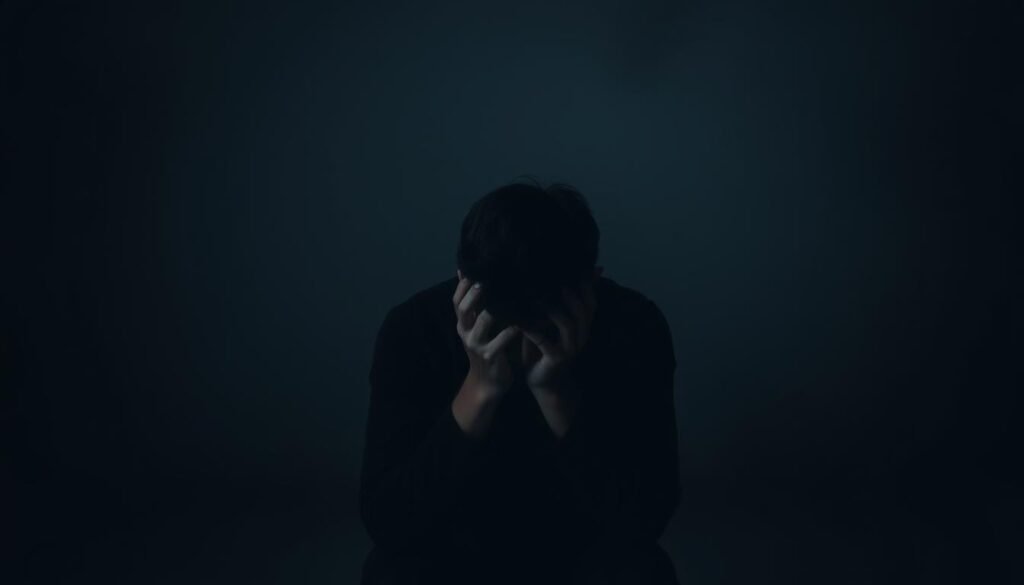Have you ever felt overwhelmed by intense fear or discomfort, yet no one around you seemed to notice? This could be a silent anxiety attack, a condition where the struggle happens internally without visible signs. Unlike typical panic episodes, these attacks are often misunderstood or overlooked.
According to the National Institute of Mental Health (NIMH), 2.7% of U.S. adults experience panic disorder, with women being twice as likely as men to face it. These episodes can involve rapid heart rate, dizziness, or a sense of impending doom, even if they appear calm on the outside.
Organizations like SoCal Empowered emphasize the importance of early detection. Their evidence-based programs, including Cognitive Behavioral Therapy (CBT) and mindfulness practices, offer effective treatment options. Recognizing the symptoms early can prevent long-term mental health challenges.
In this article, we’ll explore the signs, causes, and actionable solutions to manage these episodes. Understanding this condition is the first step toward better mental well-being.
Key Takeaways
- Silent anxiety attacks involve intense internal symptoms without visible distress.
- 2.7% of U.S. adults experience panic disorder, with women at higher risk.
- Early detection is crucial to prevent long-term mental health issues.
- SoCal Empowered offers evidence-based treatment programs like CBT and mindfulness.
- Recognizing symptoms can lead to effective management and recovery.
What Is a Silent Anxiety Attack?
Imagine feeling a surge of fear, yet appearing completely calm to those around you. This is the essence of a silent panic attack. Unlike traditional episodes, these attacks happen internally, often without visible signs like hyperventilation or trembling.
Understanding the Basics
A silent panic attack involves intense internal symptoms, such as a racing heart, dizziness, or a sense of impending doom. Despite these feelings, the person may seem composed on the outside. This covert nature makes it harder to recognize and address.
According to the American Psychological Association (APA), panic attacks are defined by sudden episodes of intense fear. However, silent panic attacks may not fit the typical diagnostic criteria due to their lack of external signs.
How It Differs from Regular Panic Attacks
Traditional panic attacks peak within 10 minutes and often involve noticeable physical symptoms. In contrast, silent panic attacks may last longer and remain hidden from others. This difference in duration and visibility can make them more challenging to manage.
Triggers also vary. While regular panic attacks often stem from immediate danger, silent panic attacks can occur unpredictably. Both types share physiological overlaps, such as a racing heart or dizziness, but the internal struggle sets silent episodes apart.
Understanding these distinctions is crucial for recognizing and addressing silent panic attacks effectively. Early awareness can lead to better management and improved mental well-being.
Signs of a Silent Anxiety Attack
Sometimes, the most intense struggles happen beneath the surface, unnoticed by others. A silent panic episode involves internal symptoms that can be overwhelming, even if the person appears calm. Recognizing these signs is crucial for understanding and addressing the issue.
Internal Symptoms You Shouldn’t Ignore
During a silent panic, the body may react in ways that aren’t visible to others. Common symptoms include heart palpitations, muscle tension, and a sense of impending doom. These feelings can be intense, making it hard to focus or function normally.
Other signs include racing thoughts, numbness, or a feeling of detachment from reality. These internal experiences can be distressing, even if they don’t show on the outside. Understanding these symptoms is the first step toward managing them effectively.
Why Silent Anxiety Attacks Are Hard to Detect
One of the biggest challenges with silent panic is its hidden nature. Because there’s no visible hyperventilation or crying, bystanders often misinterpret the person’s silence as calmness. This can lead to feelings of isolation or even misdiagnosis.
Self-identification can also be difficult. The sudden onset of discomfort or dizziness can be confusing, leaving the person unsure of what’s happening. Patient anecdotes often describe feeling trapped in their own minds, unable to express their distress.
By shedding light on these hidden struggles, we can foster better understanding and support for those experiencing silent panic episodes.
Causes of Silent Anxiety Attacks
Internal struggles often stem from a combination of external and internal factors. These episodes can be triggered by various elements, ranging from lifestyle habits to genetic predispositions. Understanding these causes is essential for effective management and prevention.
Common Triggers to Watch Out For
Several triggers can lead to internal distress. Caffeine, for instance, is a stimulant that can heighten feelings of unease. Trauma, whether recent or past, can also play a significant role. Other common triggers include hyperthyroidism, substance withdrawal, and sleep deprivation.
Environmental factors like sensory overload or chronic pain can exacerbate these episodes. Phobias and unresolved fears are additional contributors. Identifying these stress factors in your life is the first step toward managing them effectively.
The Role of Genetics and Environment
Research shows that genetics can increase susceptibility to internal distress. Twin studies reveal that individuals with a family history are more likely to experience similar episodes. However, environmental factors also play a crucial role.
Lifestyle choices, such as poor diet or lack of exercise, can lead to neurotransmitter imbalances. Chronic stress or exposure to high-pressure environments can further amplify these issues. The interplay between genes and environment is complex but essential to understand.
By recognizing these factors, you can take proactive steps to minimize their impact. Keeping a journal to track potential triggers is a practical way to start. Awareness and early intervention are key to managing these episodes effectively.
How Silent Anxiety Attacks Affect Mental Health
The internal turmoil of hidden distress can deeply affect a person’s mental health. While these episodes may not be visible, their impact is far-reaching. Understanding how they influence psychological well-being is crucial for effective management and recovery.
The Psychological Impact
Experiencing internal distress often leads to hypervigilance and avoidance behaviors. Individuals may start withdrawing from social situations, fearing a recurrence of their symptoms. This isolation can worsen feelings of loneliness and exacerbate the condition.
Untreated episodes are also linked to comorbid conditions like PTSD or OCD. The constant state of fear can trigger neurochemical changes, such as serotonin depletion, which further destabilizes mental health. These psychological effects can create a cycle that’s hard to break without intervention.
Long-Term Consequences if Left Untreated
Ignoring these episodes can lead to severe long-term consequences. Chronic distress is associated with a reduced quality of life, affecting personal relationships and professional performance. Workplace productivity often declines, as individuals struggle to focus or meet deadlines.
There’s also an increased risk of developing agoraphobia or depression. Some may turn to substance abuse as a form of self-medication, compounding the problem. Early recognition and treatment are essential to prevent these outcomes and improve overall well-being.
How to Recognize a Silent Anxiety Attack
Recognizing the subtle signs of internal distress can be challenging but crucial for effective management. Unlike visible episodes, these moments often go unnoticed, making self-awareness key to addressing them.
Key Indicators to Look For
Pay attention to physical and emotional cues that may signal a panic attack. Subtle signs like jaw tension, sudden fatigue, or unexplained heart rate spikes can indicate internal distress. These symptoms often occur without obvious triggers, making them harder to identify.
Using tools like heart rate monitors can help detect physiological changes. Daily mood-tracking apps are also useful for recognizing patterns over time. By monitoring these indicators, you can take proactive steps to reduce intensity and manage episodes effectively.
Self-Assessment Techniques
Journaling is a powerful tool for tracking patterns and identifying triggers. Writing down your experiences can help you spot recurring themes and take action before episodes escalate.
The 333 rule is another effective technique. Name three things you see, hear, and feel to ground yourself in the present moment. This simple exercise can help break the cycle of internal distress and restore focus.
Creating a checklist to differentiate between anxiety and other issues, like cardiac problems, can also be helpful. This ensures you address the root cause accurately and seek appropriate care when needed.
Incorporating mindfulness practices into your routine can further enhance self-awareness. Techniques like deep breathing or meditation can help you stay present and manage internal struggles more effectively.
Immediate Coping Strategies During a Silent Anxiety Attack
When internal distress strikes, knowing how to respond can make all the difference. Quick, effective strategies can help you regain control and reduce the intensity of these moments. Below are practical methods to calm your mind and stay grounded.
Breathing Exercises to Calm Your Mind
One of the most effective ways to manage internal distress is through deep breathing. Rhythmic breathing lowers your heart rate and promotes relaxation. Try the box breathing technique: inhale for 4 seconds, hold for 4 seconds, exhale for 4 seconds, and pause for 4 seconds. Repeat this cycle until you feel calmer.
Another method is progressive muscle relaxation. Tense and release each muscle group, starting from your toes and working upward. This helps release physical tension and redirects your focus away from distressing thoughts.
Grounding Techniques to Stay Present
Grounding exercises can help you stay connected to the present moment. The 5-4-3-2-1 technique is a popular choice. Identify five things you see, four you can touch, three you hear, two you smell, and one you taste. This engages your senses and distracts from overwhelming feelings.
Using textured objects, like a stress ball, can also help. A case study found that tactile grounding tools reduced the intensity of internal distress by providing a physical anchor. Keep a small object with you for quick access during challenging moments.
Avoid behaviors like isolating yourself or ignoring the issue. These can worsen long-term distress. Instead, reach out to trusted friends or professionals. For severe episodes, contact crisis hotlines like the National Suicide Prevention Lifeline at 988.
Long-Term Management Techniques for Silent Anxiety Attacks
Managing internal distress effectively requires a combination of lifestyle adjustments and structured routines. By addressing key factors like diet, sleep, and daily habits, you can create a foundation for better mental well-being. Let’s explore practical strategies to reduce the frequency and intensity of these episodes.
Lifestyle Changes That Make a Difference
Small changes in your daily life can have a big impact. Regular exercise, for example, releases endorphins that naturally reduce stress. Consult your primary care physician to design a safe routine tailored to your needs. Consistent sleep schedules also play a crucial role in minimizing episodes.
Your diet matters too. Incorporate magnesium-rich foods like spinach and almonds, as well as omega-3s found in fatty fish. These nutrients support brain health and stabilize mood. Additionally, consider a digital detox to reduce sensory overload and create a calmer environment.
The Role of Routine and Structure
Establishing a structured daily routine can provide stability and reduce uncertainty. Time-block relaxation activities like yoga, which studies show can lower cortisol levels. Aligning your schedule with your circadian rhythm improves sleep hygiene and overall well-being.
Incorporate mindfulness practices into your day, such as meditation or deep breathing exercises. These techniques help you stay present and manage internal struggles more effectively. By creating a balanced routine, you can build resilience and take control of your mental health.
Treatment Options for Silent Anxiety Attacks
Finding the right approach to manage internal distress can significantly improve your quality of life. Whether through professional therapy, medication, or alternative methods, there are effective ways to address these challenges. Let’s explore the options available to help you regain control and feel better.
Therapy and Counseling
Professional therapy is a cornerstone of managing internal distress. Cognitive Behavioral Therapy (CBT) is widely recognized for its effectiveness. It helps restructure negative thought patterns and provides practical tools to reduce intensity of symptoms. Studies show that CBT has a success rate of over 60% in treating anxiety disorders.
Other approaches, like Dialectical Behavior Therapy (DBT) and exposure therapy, also show promising results. DBT focuses on emotional regulation, while exposure therapy helps individuals confront and overcome specific fears. SoCal Empowered offers personalized treatment plans that combine these methods for optimal results.
Medication and Alternative Treatments
For some, medication can be a helpful addition to therapy. SSRIs and SNRIs are often prescribed as first-line treatments. These medications work by balancing brain chemicals to stabilize mood. Beta-blockers are another option, particularly for alleviating physical symptoms like rapid heart rate.
Alternative treatments, such as herbal supplements, are gaining popularity. Lavender and chamomile are known for their calming effects. However, it’s important to consult a healthcare provider before starting any supplement, as dosage and interactions vary.
Teletherapy has also become more accessible post-pandemic, making professional support available from the comfort of home. This flexibility ensures that more people can access the help they need, regardless of location.
How to Support Someone Experiencing a Silent Anxiety Attack
Supporting someone during a challenging moment requires patience and understanding. When someone is experiencing internal distress, your response can make a significant difference. Knowing what to say and do, as well as what to avoid, is crucial for providing effective support.
What to Say and Do
Start by offering empathy and reassurance. Phrases like “I’m here with you” can provide comfort. Avoid dismissive statements such as “calm down,” as they may invalidate their feelings. Instead, validate their experience without judgment.
Active listening is key. Focus on their words and body language, showing that you’re fully present. Encourage them to express their feelings, but don’t pressure them to talk if they’re not ready. Sometimes, just being there is enough.
Educate yourself on resources like the National Alliance on Mental Illness (NAMI) and the Anxiety and Depression Association of America (ADAA). These organizations offer valuable tools and information for both individuals and caregivers.
What to Avoid
Certain actions can worsen the situation. Avoid crowding the person or demanding explanations. These behaviors can increase their sense of fear and make them feel more isolated.
Caregivers should also be mindful of burnout. Supporting someone through repeated episodes can be emotionally draining. Practice self-care and seek help when needed to maintain your own well-being.
By understanding these do’s and don’ts, you can provide meaningful support and help them navigate through their struggles more effectively.
Preventing Silent Anxiety Attacks
Taking proactive steps can help minimize the impact of internal distress. By identifying potential triggers and building resilience, you can reduce the frequency and intensity of these episodes. Prevention starts with awareness and actionable strategies.
Identifying and Avoiding Triggers
Understanding your triggers is key to prevention. Tools like trigger journals can help you track patterns and identify what causes distress. Apps like Bearable make it easy to log symptoms and pinpoint recurring themes.
Creating a personalized “calm kit” is another effective technique. Include items like essential oils, calming music, or a stress ball. These tools can provide immediate relief during challenging moments.
Building Resilience Through Mindfulness
Practicing mindfulness can significantly enhance your ability to manage internal struggles. Mindfulness-Based Stress Reduction (MBSR) protocols, for example, teach techniques to stay present and reduce stress.
Studies show that mindfulness apps can reduce recurrence by up to 40%. Joining community support groups also fosters accountability and shared learning. These steps, combined with consistent practice, can lead to long-term recovery and improved well-being.
Conclusion
Taking control of your mental health starts with understanding and action. While internal struggles can feel overwhelming, they are manageable with the right treatment and support. Early intervention can prevent 75% of chronic cases, making it crucial to seek help when needed.
If self-help strategies aren’t enough, consulting a professional is a vital step. Organizations like SoCal Empowered offer tailored programs designed to address these challenges effectively. Their evidence-based approaches provide the tools needed to regain control and improve your quality of life.
Remember, you’re not alone in this journey. By taking proactive steps, you can build resilience and create a healthier, more balanced future. Start today—your mental well-being is worth it.
FAQ
What is a silent anxiety attack?
A silent anxiety attack involves internal symptoms like fear or discomfort without visible signs. It differs from regular panic attacks, which often include obvious physical reactions like heart palpitations or dizziness.
How can I recognize a silent anxiety attack?
Look for internal signs such as racing thoughts, a sense of dread, or feelings of detachment. Self-assessment techniques like mindfulness can help identify these subtle symptoms.
What causes silent anxiety attacks?
Triggers include stress, caffeine, or unresolved emotional issues. Genetics and environmental factors also play a role in their development.
How do silent anxiety attacks affect mental health?
They can lead to chronic stress, reduced quality of life, and long-term psychological issues if left untreated. Early intervention is crucial for mental well-being.
What are immediate coping strategies during a silent anxiety attack?
Deep breathing exercises and grounding techniques, like focusing on your senses, can help calm your mind and reduce intensity.
How can I manage silent anxiety attacks long-term?
Lifestyle changes such as regular exercise, a balanced diet, and structured routines can make a significant difference. Mindfulness and meditation also help build resilience.
What treatment options are available for silent anxiety attacks?
Therapy, such as cognitive-behavioral therapy (CBT), and medications like SSRIs are common treatments. Alternative options include relaxation techniques and mindfulness practices.
How can I support someone experiencing a silent anxiety attack?
Offer reassurance, listen without judgment, and encourage them to use coping techniques. Avoid dismissing their feelings or pressuring them to “snap out of it.”
Can silent anxiety attacks be prevented?
Yes, by identifying and avoiding triggers, practicing mindfulness, and building emotional resilience through healthy habits and stress management.












